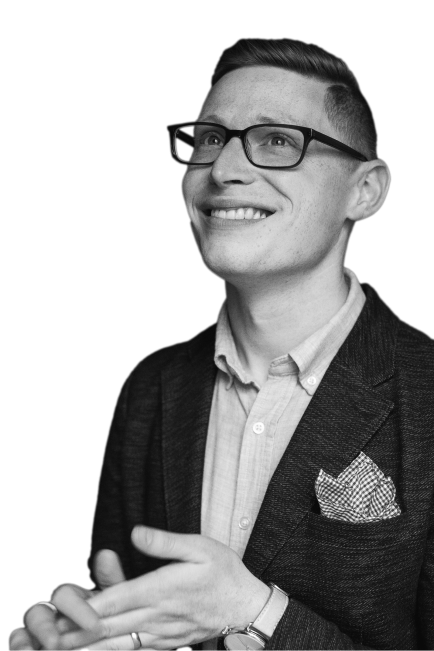Press
Chorus pro Musica's Music as Religion
publication
Matthew Winkler
fulltext
Reviving Feldman’s Rothko Chapel proves both a noble and daunting task. Besides the demands Feldman makes on the performers by subjecting their individual artistry to the metaphysical beast of timbre and sound, the nature of the work itself, reflected by the title, poses a challenge. How can it be possible to present Rothko Chapel outside of the namesake chapel? Should the piece be presented historically, archived amidst canonical composers and preserving Feldman the historical figure? Or should it strive for the original artistic impact, a feat never fully within reach when divorced from the time and place of the first performance? Chorus pro Musica and the Sonic Liberation Players attempted both, and their transcendental rendition of Rothko Chapel dwarfed the rest of the program. Under conductor Jamie Kirsch, a musical church arose within Boston’s Church of the Covenant last Saturday night around the iconic work.
The Rothko Chapel, which opened in Houston 1971, is a non-denominational holy space, welcoming to all and belonging to none. It houses 14 commissioned paintings by Mark Rothko in enveloping walls of black and purple that change shape and meaning the longer the viewer regards them, contributing to the spiritual intent of the space. Feldman’s eponymous work, which premiered in the Chapel in April 1972, attempts musically to capture this effect. With the Chapel’s appeals to universal human connection and accessibility, a staging of Feldman’s piece within the specialized realm of the classical concert hall already runs an up-hill battle. In closing with Rothko Chapel, Chorus pro Musica finally enabled such communal spiritual metamorphosis.
The Church of the Covenant, an ornate hallowed hall, sparkling with bejeweled Christian imagery and imposing in its architectural and decorative splendor, practically yelled at us that music within it was in service of God, further implying that music worthy of the hall was of a vetted historical merit. The medium of the venue, then, both undermined the secular intention and understated accessibility of Rothko Chapel. The decision to perform in the Church of the Covenant, however, was not inherently problematic. Afterall, it served a perfect acoustical space for the choir, and placing Feldman’s Rothko Chapel within it had the potential to secularize the function of the space. But half of the six pieces on the program were explicitly Christian, with Lighter Motives being based on Ecclesiastes 11:7, Misericordias Domini setting text from Psalm 89, and Cedit, Hyems (Be Gone, Winter!) depicting the anticipation of Christ’s birth. Even the non-Christian works vitiated the connective mission of Rothko Chapel, though with the exception of Misericordias Domini and Rothko Chapel, every piece originated in the 2000s, a commendable feat often missing from the classical world of today.
If they did not have to stand next to Feldman’s piece, these works would merit praise in composition and performance. Dominick DiOrio’s All Is and Jocelyn Hagen’s Ophelia left a particularly invigorating impression. All Is, a musical setting of a creation story from the perspective of the mother of God, anchored the soprano soloist’s optimistic melody amidst swirling dark modulations of the choir, desperately trying to find light within the darkness. Soprano Jessica Tunick Berens forthright and pleading recitation of the melody enabled the work’s intention. Ophelia highlighted the chorus, with the female voices bursting through with major brightness, before being swallowed by watery and unresolved male tenors. Only in Mozart’s Misericordias Domini did the choir have some difficulty, and while Rothko’s connection to Mozart allowed a clever working in of the maestro, the performance begged a question of its inclusion in the program. But placed alongside Feldman, these otherwise laudable performances detracted from the intended egoless meditative effect.
Recognizing that Rothko Chapel has to go beyond conventional concert expectations, Kirsch instructed us to close our eyes and welcome whatever emotions may come over us, and to accept that there is nothing “to get” that we might be missing. But despite his sage guidance, the Christianity and intellectualism embedded in the previous works badly framed the resplendent interpretation of the title work.
The hushed wordless cluster chords ethereally pirouetted among colors, with soprano Jessica Tunick Berens occasionally breaking through the texture with a redirected and individualized hue. Gabriel Solomon’s essential viola struck a delicate balance between virtuosic individuality and blended textural conformity. Tipping too far either way would have broken the spell; he impressively kept the magic in a dangerous balancing act in an overpowering and breathtaking delivery of Rothko Chapel. Holding an indeterminable silence after the conclusion, conductor Kirsch sustained the most powerful moment of the show. I felt the same meditative emotional trance that I have felt from the many times I’ve visited the Rothko Chapel in Houston.
Matthew Winkler is studying music and history at Tufts university. He is a composer and researcher who also plays jazz and classical trumpet.

